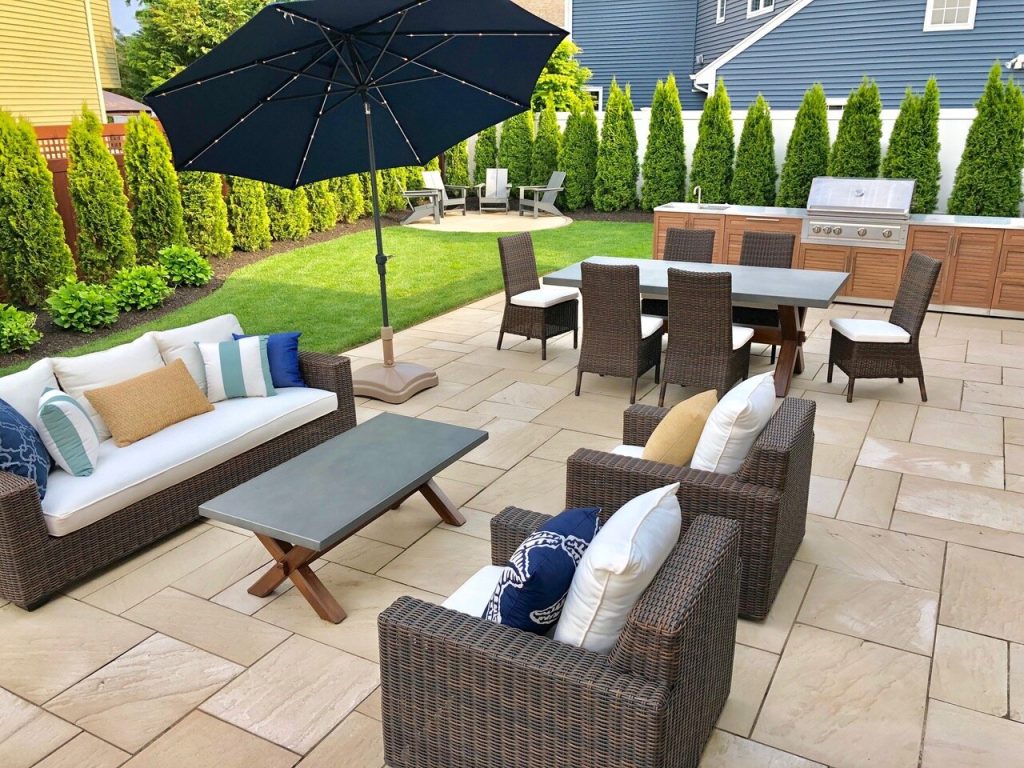There is a debate about which type of design—landscape or hardscape—is better in the gardening world. Landscaping focuses on growing plants and allows for freedom of choice when it comes to what types of flowers, shrubs, and bushes you want to grow. Hardscaping is a more structured design that relies heavily on artificial materials such as brick pavers, stone walls, metal railings, and wood fences. Which one should you choose? In this blog post, we will compare landscaping vs. hardscaping so you can decide!
1. What is hardscaping?
Hardscaping is a more structured design that relies heavily on man-made materials such as brick pavers, stone walls, metal railings, and wood fences.
Hardscaping is the practice of using hardscape materials for decoration purposes in landscaping projects. These can include items like bricks or concrete used to create patios, walkways, or driveways.
2. The benefits of hardscaping.
The benefits of hardscaping include:
- The ability to create clean lines and geometric shapes
- Structured, formal design that requires less yearly upkeep than landscaping.
- Maintenance is infrequent and limited to weddings, trimming and clearing debris.
- A consistent look throughout the year as there are no living plants that can die or go dormant in the winter months.
- Hardscaping installation usually involves less ongoing labor than landscaping projects since maintenance is minimal with hardscape materials such as pavers and stone.
3. The benefits of landscaping
The benefits of landscaping include:
The ability for homeowners to express themselves creatively with plant choices can be a great source of personal satisfaction and pride in the home. In addition, it allows people to enjoy seasonal changes throughout the year as different plants come into bloom or lose their leaves depending on the season. Also, there is more flexibility in terms of garden design when you are working with living plants.
There is more flexibility in landscaping projects than hardscaping because there isn’t a need to rely on materials like brick pavers or stone walls for installation, which can limit the shape and size of your yard dramatically if they do not fit in your budget. There are no limitations on the size and type of plants you can grow in a landscaping project.
A wide variety of flowers, shrubs, and bushes is available to choose from for landscaping projects. This allows homeowners to experiment with different colors or shapes as they work on their garden design ideas. In addition, there are many types of trees that make good options when landscaping, including pine, spruce, and cedar.
Living plants add natural beauty to landscaping projects that cannot be replicated with manufactured materials such as brick or stone. In addition, living plants provide shade for people who want to enjoy their garden in the summer months but also need some protection from the sun’s rays on hot days. Finally, landscaping provides a more natural look that can be very soothing and aesthetically pleasing.
Summary:
In conclusion, there are benefits to both hardscape and landscaping projects but it ultimately comes down to personal preference and the budget you have available for each project type. It is also important to keep in mind how much maintenance will need to take place for each type of project as living plants will require more upkeep than man-made materials you use for hardscaping.
For any projects, we recommend working with a professional contractor who can provide advice on the best design ideas and possible installation solutions for your property. This is especially important when it comes to small or large designs that are more complex than a typical garden project.
When it comes to good landscaping and hardscaping, we recommend checking out Whitwell landscaping, as they provide the best landscaping and hardscaping in the United States.

